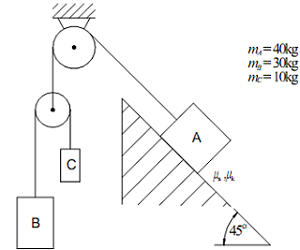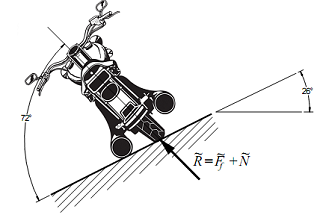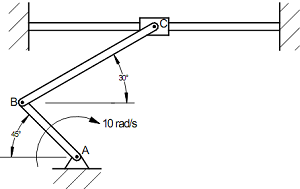Reference no: EM131448
Question 1
The system shown below is released from rest.

(a) Determine the smallest coefficient of static friction necessary for mass A to remain stationary.
(b) Say that the system is "bumped" in order to initiate motion of mass A. If kinetic friction is 70% of the value Determined in part (a), Determine the acceleration of each mass in the system and the tension in both cables once it starts moving.
Question 2
The lean angle of a motorbike is in response to the forces applied at the rear tyre - to avoid falling over in the corner, the bike and rider need to lean so that the total force applied to the contact patch points at the centre of mass. Many big "cruising" bikes are limited in the amount of lean angle that can be achieved due to low hung exhaust systems.
Consider the bike shown below that is negotiating a banked corner with a radius of 50m.

(a) Determine the maximum speed at which the bike can travel around this corner without scraping the exhaust pipes on the road.
(b) Determine the minimum coefficient of static friction necessary to make the turn at this speed.
Question 3
In the pin jointed mechanism shown below;
Link AB has a length of 300mm and rotates with a constant angular velocity as indicated.
Link BC has a length of 600mm
Point C is constrained to move horizontally along the shaft.

Determine the velocity of point C at this instant.